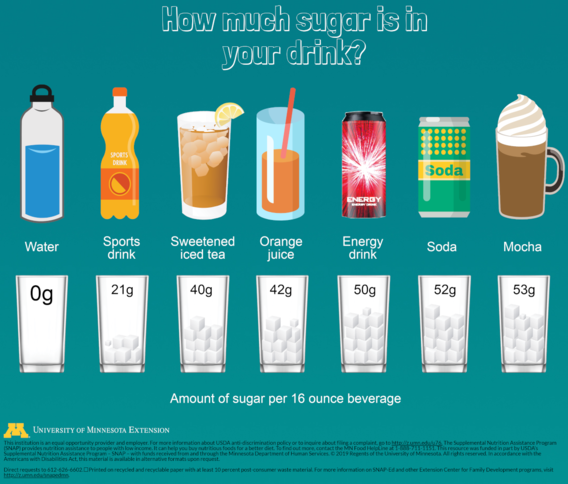Drink choices are a part of a healthy diet.
Rethink your drink.
Think about all the beverages you consume each day. What do you drink at each of your meals? How about in between meals?
If someone asked you what you ate yesterday, you may not think to include what you had to drink in your answer. But your drink choices are part of your overall eating pattern and can add extra sugar and calories. Thinking about what types of beverages you’re drinking, and choosing beverages without added sugar, is one way to make good food choices. You don’t have to cut out sugary drinks completely. Try replacing one or two added-sugar beverages each day and see if that makes a difference in how you feel.
The sugar in beverages can add up.
Do you know how much sugar is in your favorite beverage? Check out these examples.

How can you find out the amount of sugar in a drink?
To find out how much sugar is in your favorite drink, read the label. Find the amount for "sugars," which will be listed in grams. If you want to know what that amount is in teaspoons, divide the grams by 4. Check out our label reading page to learn more.
What about fruit juice?
Some juices have added sugars, but 100% juice contains only naturally-occurring sugars. It’s hard to know from the Nutrition Facts label whether it’s naturally occurring or added sugar, but sugar is sugar, so it’s best to limit total sugar intake.
When it comes to fruit juice, it’s always better to eat whole fruit because it contains fiber -- which helps you feel full longer. Try not to drink more than 1 cup (8 ounces) of 100% juice each day. You can tell by the product label if a juice is 100% fruit juice or not.
Choose water.
Water has no calories and no sugar. Water is always a good choice, but other healthier options include milk; 100% juice; and other unsweetened beverages such as unsweetened tea or coffee, sparkling water and water infused with fruit or herbs.